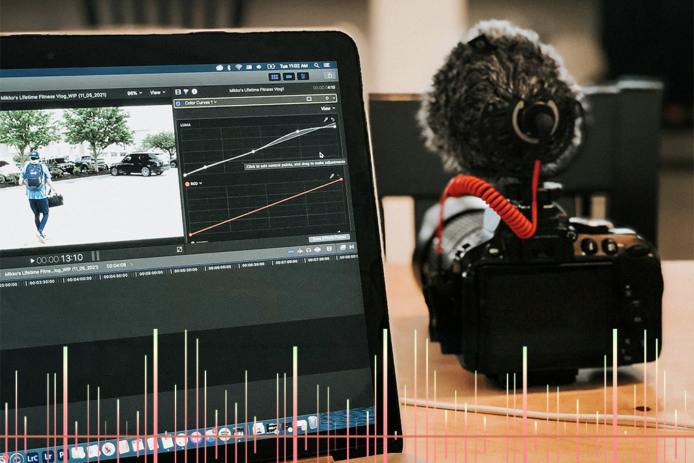Transcribing an interview is a critical step in journalism, research, legal documentation, and content creation. Whether you’re capturing expert insights, customer feedback, or legal testimonies, having an accurate transcript ensures that key details are preserved and easily accessible for reference, analysis, or publication. However, the process can be time-consuming, especially when dealing with multiple speakers, technical terminology, or poor audio quality.
In 2025, advancements in AI-driven transcription tools have revolutionized the industry, making transcriptions faster, more precise, and highly efficient. Automated transcription software like Sonix can now achieve up to 99% accuracy, reducing the need for manual corrections while saving hours of work. Meanwhile, hybrid approaches that combine AI with human editing allow for even greater precision, ensuring transcripts are error-free and formatted correctly.
This guide will walk you through the best transcription methods, covering manual, AI-powered, and hybrid solutions. You’ll also learn how to optimize audio quality, improve transcription accuracy, and choose the best tools for your needs. Whether you’re transcribing a one-on-one interview or a multi-speaker discussion, this complete guide will help you streamline the process and achieve professional-quality transcripts with ease.
Key Takeaways
- Transcribing interviews enhances accessibility, searchability, and content usability across journalism, research, legal, and content creation fields.
- AI transcription tools like Sonix streamline the process, offering 99% accuracy, speaker identification, timestamps, and AI-powered analysis.
- High-quality recordings improve transcription accuracy—use external mics, noise reduction techniques, and reliable recording software.
- Manual transcription takes 4–6 hours per hour of audio, while AI transcription completes the process in minutes with minimal editing.
- Transcripts boost SEO, improve workflow efficiency, and allow the repurposing of content for reports, articles, and subtitles.
- Try Sonix’s AI-powered transcription for free — get a 30-minute trial and simplify your transcription workflow today!
How to Transcribe an Interview in 6 Easy Steps
Whether you’re using manual transcription, AI-powered tools, or a combination of both, following these six steps will help you produce an accurate and well-structured transcript with minimal effort.
1. Create a High-Quality Recording of the Interview
A high-quality transcript starts with a clear and precise audio recording. Poor audio can lead to misinterpretations, missing words, and increased editing time. To ensure the best possible recording, use reliable recording devices or software and always test your setup beforehand to avoid unexpected technical issues.
Before you start recording, it’s important to notify all the parties involved that the interview is being recorded to avoid any accidental violations of privacy laws.
Recording on Mobile Devices
For phone interviews, using your device’s built-in recorder may not be sufficient. Instead, consider apps designed to capture both sides of the phone conversation:
- Cube ACR (Android): Works with phone calls and VoIP apps like WhatsApp.
- Google Voice: Allows call recording, but only for incoming calls.
Recording on Laptops or Desktops
For remote interviews conducted via Zoom, Google Meet, or Teams, most platforms offer built-in recording features. However, if you need more control over audio settings and quality, a great option is OBS Studio, a free, professional-grade recording tool that allows multi-source recording, background noise filtering, and high-resolution audio capture.
Recording In-Person Interviews
For face-to-face interviews, invest in a high-quality external microphone instead of relying on your device’s built-in mic. Consider:
- Lavalier microphones (clip-on mics) for interviews on the go.
- Shotgun microphones for directional sound capture.
- Handheld recorders like the Zoom H4n for professional-grade audio.
2. Choose a Transcription Method
There are two main ways to transcribe an interview: manually or automatically.
- Manual transcription involves listening to the audio and typing out what you hear using a word processor or transcription software. This method is more time-consuming but gives you complete control over the accuracy and formatting of the transcript. Manually transcribing a one-hour clip will take you around 4-5 hours.
- Automatic transcription, on the other hand, uses AI-powered software to convert the audio into text. Automatic transcription can save you a significant amount of time and effort. While not perfect, AI transcription platforms like Sonix can transcribe content with up to 99% accuracy.
3. Set Up Your Transcription Environment
To transcribe efficiently, create a comfortable workspace and gather the right tools. Find a quiet room where you can work uninterrupted, and use headphones to better hear the audio. If transcribing manually and frequently, consider investing in a foot pedal that allows you to control audio playback hands-free.
Transcription software with keyboard shortcuts and variable playback speed can also help streamline the process.
4. Transcribe the First Draft
With your setup ready, it’s time to start transcribing. If working manually, listen to short segments of the audio at a time and type out what you hear verbatim. Note speaker labels, timestamps for key sections, and any inaudible or unclear parts. Don’t worry about perfect grammar or formatting at this stage; the goal is to get a complete first draft down.
If using automatic transcription, upload your audio file to the software and let it generate a draft transcript. You’ll still need to review and edit this machine-generated transcript, but it can give you a helpful starting point.
5. Edit and Format the Transcript
Once you have a rough draft, go back through and clean up the text. Fix any typos or misheard words, and add proper punctuation. If you’re aiming for an intelligent verbatim or edited transcript, now is the time to remove filler words and false starts, and to paraphrase any rambling or repetitive passages.
Next, format the text for readability. Add speaker labels and timestamps if desired, and break up long paragraphs. Use headers to divide the transcript into sections based on topic or question. If you plan to code or analyze the transcript, consider adding notation or tags.
6. Proofread the Final Transcript
Finally, give the transcript a thorough proofread to catch any remaining errors. Listen to the original audio while reading along with the text to ensure everything matches up. You may want to run spell check and do a find-and-replace for any misspelled words or inconsistencies in speaker labels.
If possible, ask a colleague or fellow researcher to review the transcript as well for an extra set of eyes. Make any necessary corrections, then save and back up the final transcript in your desired format.

How to Transcribe an Interview Automatically with Sonix
Transcribing an interview using Sonix is a simple and efficient process. Follow these step-by-step instructions to convert your audio or video interview into an accurate transcript:
Step 1: Sign Up for Sonix
Go to the Sonix site and create an account. Sonix offers a free trial with 30 minutes of free transcription, so you can test the service before committing.
Step 2: Upload Your Interview File

Once logged in, click the Upload button and select your interview recording. Sonix supports multiple file formats, including MP3, MP4, WAV, M4A, and MOV.
You can upload files from your computer or cloud storage (Google Drive, Dropbox) or even provide a link to an online recording.
Step 3: Choose Your Language

Sonix supports over 53 languages, so select the appropriate language spoken in the interview to ensure the most accurate transcription.
If you’re not sure what the spoken language is, you can set it to auto detect the language automatically.
Furthermore, if your interview includes multiple languages, Sonix also gives you the option to transcribe multiple languages in a single track.
Step 4: Start Automatic Transcription
After uploading your file, Sonix will automatically process the audio using its AI-powered speech-to-text technology. The transcription process is quick, often taking just a few minutes, depending on the length of the interview.
Once the transcription process is finished, you’ll receive a notification of its completion via email.
Step 5: Review and Edit the Transcript

Once the transcript is generated, you can review it within Sonix’s interactive editor. Play the audio while following along with the text, and make any necessary corrections. Sonix highlights words that may need attention, making it easier to fix errors.
Step 6: Use Our AI-Analysis Features
Once your interview is transcribed, Sonix’s AI-powered analysis tools can help you extract key insights, identify themes, and summarize important moments — all without manually combing through the transcript.
One of the standout features is Custom Prompts, which allows you to ask Sonix specific questions about your transcript. Whether you need a summary of key takeaways, a list of action items, or insights on a particular topic, Sonix can generate precise answers based on your content.

Other powerful AI-analysis tools include:
- Automated Summaries: Get a concise breakdown of the most important points discussed.
- Topic Detection: Identify recurring themes and key subjects within your conversation.
- Sentiment Analysis: Understand the tone and emotional context of the discussion.
- Speaker Identification: Easily differentiate between multiple speakers for better clarity.
These features help businesses, researchers, and content creators quickly analyze interview data, make informed decisions, and streamline workflows. With Sonix’s AI-analysis tools, you don’t just get a transcript; you get actionable insights that save time and enhance productivity.
Step 7: Export Your Transcript
Once you’re satisfied with the transcript, you can export it in multiple formats, including Microsoft Word (DOCX), PDF, TXT, or Subtitles (SRT, VTT). Choose the format that best suits your needs, whether for publishing, sharing, or further analysis.

Step 8: Translate or Share Your Transcript (Optional)
If needed, you can use Sonix’s built-in translation feature to convert your transcript into another language. You can also share the transcript directly with collaborators by generating a shareable link.
Using Sonix to transcribe interviews saves time, enhances accuracy, and improves workflow efficiency. Try it for free today and experience seamless transcription for yourself.
Common Types of Interview Transcription
There are a few different types of interview transcription, depending on your needs and the level of detail required:
1. Verbatim transcription
This type of transcription captures every single word and sound uttered, including filler words (like “um” or “uh”), false starts, repetitions, and non-verbal communication such as laughter or pauses.
Verbatim transcripts are often used in legal or research contexts where accuracy is paramount.
2. Intelligent verbatim transcription
Also known as “clean verbatim,” this type of transcription aims to capture the meaning of what is said while lightly editing for readability. Filler words, stutters, and irrelevant chatter are omitted, and minor grammatical errors may be corrected.
This is a good option for most general-purpose interviews.
3. Edited transcription
In some cases, you may want a transcript that heavily condenses and paraphrases the content of the interview, rather than a word-for-word account. Edited transcription aims to distill the key points and overall meaning while significantly cleaning up the text to be more concise and readable.
Benefits of Transcribing Interviews
Transcribing interviews provides numerous advantages that improve the usability, accessibility, and overall value of recorded conversations. Whether you are a journalist, researcher, content creator, or business professional, having a written transcript makes it easier to organize, analyze, and share information. Here’s why you should be transcribing your interviews.
1. Time-Saving and Efficiency
Listening to a full-length interview recording to find key information can be time-consuming and inefficient. A written transcript allows users to quickly scan and locate important points without having to replay the audio or video multiple times.
This is especially beneficial for journalists working on tight deadlines, researchers handling multiple interviews, and business professionals who need to extract insights efficiently. By providing a structured, readable format, transcription streamlines workflow and makes interview content easier to process.
2. Improved Accessibility
Transcripts make interview content more inclusive and accessible to diverse audiences. Individuals who are deaf or hard of hearing can engage with the material through text, ensuring they are not excluded from important discussions. Additionally, many people simply prefer reading over listening, whether for personal preference, convenience, or the ability to highlight key points.
Providing a written version of an interview ensures that the content is accessible to all, regardless of their preferred consumption method.
3. Enhanced Content Usability and Repurposing
A written transcript allows interview content to be easily transformed into multiple formats, making it more versatile. Journalists and content creators can extract quotes for articles, bloggers can use key insights for long-form content, and researchers can pull relevant sections for reports or academic papers.
Video creators can also use transcripts to generate captions and subtitles, improving audience engagement. Transcription makes it possible to extend the lifespan of interview content by repurposing it across different media platforms, increasing its overall value.
4. Increased Searchability and Referencing
When conducting research or creating content, being able to reference specific information from an interview quickly is crucial. Transcripts provide a text-based record that allows users to search for keywords, highlight key sections, and extract relevant quotes without replaying audio repeatedly.
This is particularly useful for legal professionals, academics, and corporate teams who need accurate records for documentation and decision-making. Having a searchable text version of an interview simplifies the process of retrieving and utilizing information efficiently.
5. SEO and Online Discoverability
Audio and video content alone are not easily indexed by search engines, which limits their discoverability online. By transcribing interviews and providing text-based versions, websites can improve their SEO rankings, making their content more visible in search engine results. Written transcripts help drive organic traffic to websites, increase engagement, and enhance content marketing efforts.
Businesses, podcasters, and content creators who publish interviews online can significantly boost their audience reach by offering searchable and readable transcripts alongside their multimedia content.
Closing Thoughts – Is Transcribing Your Interviews Worth It?
Transcribing interviews may require effort, but it unlocks a lot of possibilities for your recorded content by making it more accessible, searchable, and useful for various applications. Whether you are a journalist, researcher, content creator, or business professional, having a well-structured transcript helps you analyze conversations, extract key insights, and repurpose content efficiently.
While manual transcription can be time-consuming and tedious, modern AI-powered tools like Sonix simplify the process, delivering fast and accurate results with minimal effort.
With Sonix’s automated transcription service, you can streamline your workflow, improve productivity, and focus on what truly matters — extracting value from your interviews instead of spending hours transcribing them manually.
Sonix provides an intuitive, user-friendly platform that converts your interview recordings into highly accurate text while offering advanced features like speaker identification, timestamps, and translation capabilities. Whether you need a verbatim transcript for research, a cleaned-up version for publication, or subtitles for video content, Sonix helps you achieve it with ease.
Try out Sonix’s 99% accuracy today. We make it simple — get started with our 30-minute trial — no credit card required!
How to Transcribe an Interview: Frequently Asked Questions
What’s the Easiest Way to Transcribe an Interview?
The easiest way to transcribe an interview is by using automated transcription software, which quickly converts spoken words into text. AI-powered tools like Sonix can process audio in minutes with high accuracy, significantly reducing the need for manual corrections. These tools also provide speaker identification, timestamping, and editing features, making the transcription process smoother and more efficient compared to manual methods.
How Long Does It Take to Transcribe a 1-Hour Interview?
The time required to transcribe a 1-hour interview depends on the method used. Manual transcription can take 4-6 hours or longer, depending on audio clarity and typing speed. However, automated transcription software like Sonix can transcribe an hour of audio in just a few minutes, dramatically speeding up the process. Minor edits may still be needed, but overall, AI saves significant time.
How Can I Transcribe an Interview for Free?
Some transcription services offer free trials or limited free usage for new users. Platforms like Sonix provide free transcription minutes upon signing up, allowing users to test the accuracy and features before committing. Free tools may have limitations on accuracy, file length, or export options, so if you need high-quality transcripts, a paid plan with advanced editing features is often the better choice.
Can I Transcribe a Video Interview?
Yes, video interviews can be transcribed just like audio files. AI-powered transcription software can extract the audio from video files and generate an accurate text transcript. Tools like Sonix support multiple file formats, including MP4, MOV, and AVI, making it easy to convert video interviews into text. This is useful for subtitles, content repurposing, and interview analysis.
How Do You Transcribe an Interview for a Dissertation?
For academic research, using a reliable transcription tool ensures that every detail is captured accurately and efficiently. Software like Sonix can transcribe interviews with timestamps and speaker identification, making it easier to reference key points. For dissertations, verbatim transcription (capturing every word) is often preferred. Researchers should also review and edit transcripts for accuracy before citing them in their work.
World's Most Accurate AI Transcription
Sonix transcribes your audio and video in minutes — with accuracy that'll make you forget it's automated.






